Sprains are common injuries that occur when the ligaments around a joint stretch or tear. Ligaments are tough, flexible fibers responsible for holding bones together.
A sprain can occur when a joint is forced into an unnatural position, causing the ligament to be stretched beyond its normal limit; for instance, twisting your ankle can lead to a sprain. Common symptoms include pain, swelling, bruising, and difficulty moving the affected joint.
Sports activities and everyday actions that lead to falls or slipping are frequent causes of sprains. Usually, sprain symptoms can be treated at home with proper rest, ice, compression, and medication.
In severe cases of sprains, surgery might be required to fix the torn ligaments. Additional treatments like exercises and physical therapy can also help in recovery.
Dr. Ulric Bigby, with his extensive expertise and a patient-centric approach, provides comprehensive treatment for sprains.
Sprains can affect any joint held together by ligaments. The most frequently sprained joints include:
- Ankle sprains
- Wrist sprains
- Knee sprains
- Finger sprains
- Thumb sprains
Sprains are a common injury, especially among athletes. Any activity that pushes your joint beyond its normal range of motion can result in a sprain. Common causes of sprains include:
- Sports-related injuries
- Falls
- Slips
- Rolling an ankle
- Twisting a knee
- Repetitive strain injuries
- Overexertion
The intensity and symptoms of sprains may vary based on the severity of your injury. Common symptoms of sprains include:
- Pain
- Swelling
- Bruising
- Restricted mobility
- Muscle spasm
- Muscle weakness
- Inflammation
- Cramping
The intensity of your pain will vary significantly based on the severity of your sprain injury.
Sprains can be graded based on the extent of damage sustained by the ligaments in the injury. Three grades of sprain injuries include:
- Grade 1 is for mild sprains characterized by minimal tearing and damage to the ligament. In these cases, you may encounter minimal restrictions in mobility, along with localized pain and swelling. Treatment for grade 1 sprains typically involves medication and hot-cold compression for relief.
- Grade 2 involves a moderate sprain injury, where a substantial portion of the ligament is torn but not completely through. This level of sprain is marked by significant pain and swelling, coupled with moderate functional limitation.
- Grade 3 includes severe sprain injury where the ligament is completely torn. Treatment for these sprains may involve prolonged physical therapy; in some cases, surgical intervention might be necessary.
The diagnosis of sprains include:
- Physical examination of the sprain to assess the extent and nature of the damage. This examination involves inspecting the injured joint, evaluating pain, swelling, and tenderness, and assessing symptoms.
- Imaging tests such as X-rays, MRI, and ultrasounds of the joint and surrounding tissue are employed to diagnose the extent of soft tissue damage and to rule out any bone injuries.
The diagnosis may vary depending on the severity of your sprain injury. In mild cases of sprains, a physical examination alone is sufficient to plan the treatment.
The treatment of sprain injuries depends on the severity of your cases. Initial measures after experiencing a sprain involve immediate self-care and first aid.
Subsequently, consulting a physician is advisable. The treatment options for sprains include:
Surgery is performed if the sprain is severe with complete rupture of ligaments. Usually, Grade 3 sprain injuries require surgical intervention. Surgery may be necessary if a particular joint has experienced recurrent sprains.
First-aid steps for sprains include:
- Stop the activity and rest your injured area.
- Apply ice packs on the affected area to reduce swelling.
- Compress or bandage the injured site firmly to restrict movement.
- Raise the injured area above heart height whenever possible.
- Refrain from putting stress on the joint.
If symptoms worsen within the first 24 hours, seek medical assessment.
To minimize the risk of sprains, follow these precautions:
- Use protective gear for activities that stress your ankles and other joints.
- Use proper fitting of shoes.
- Avoid high-heeled footwear.
- Warm up and stretch before engaging in exercise and sports.
- Incorporate a cool-down routine after physical activity.
- Take sufficient time for rest and recovery after intense physical activity.
- Refrain from participating in sports and activities you are not trained for.
If your sprain symptoms haven’t subsided in the first two days, seeking medical attention for proper recovery and preventing complications is crucial. With his extensive experience and expertise, Dr. Ulric Bigby specializes in treating sprain injuries and offers personalized care and guidance to facilitate recovery.
Schedule your consultation online or get in touch with Dr. Bigby at one of his three locations:


